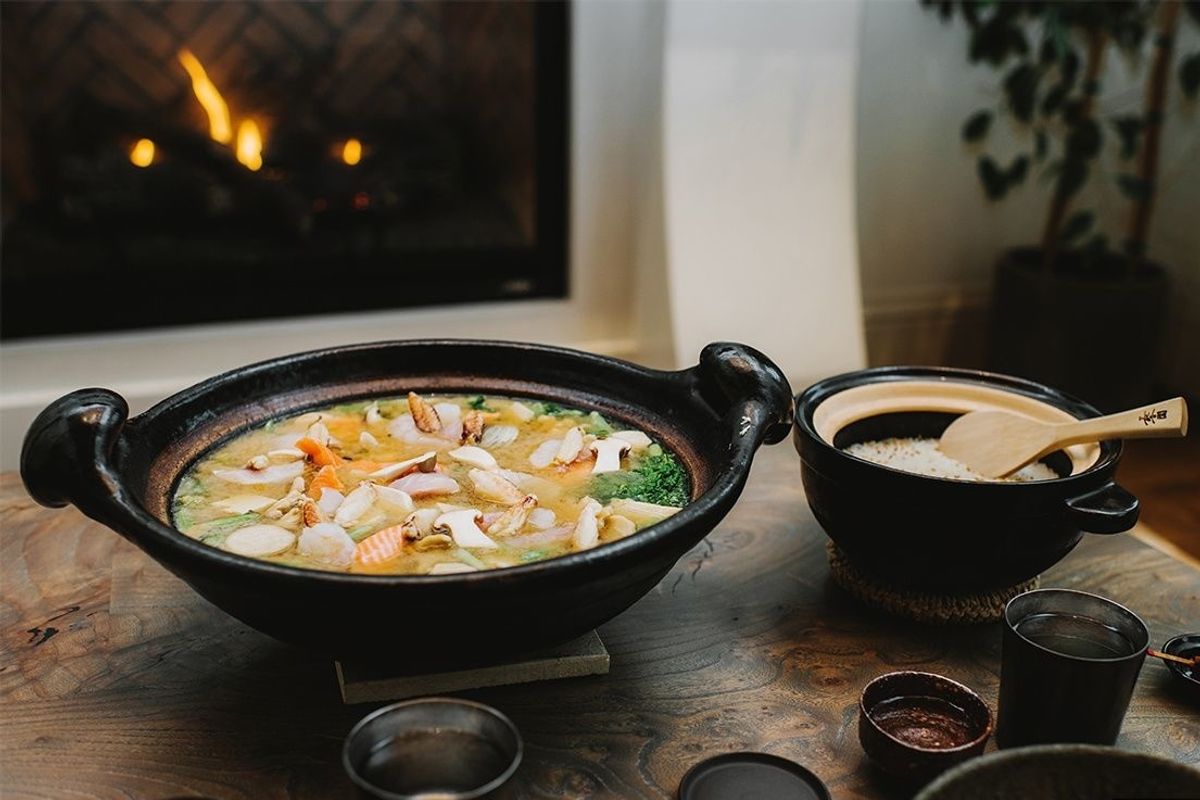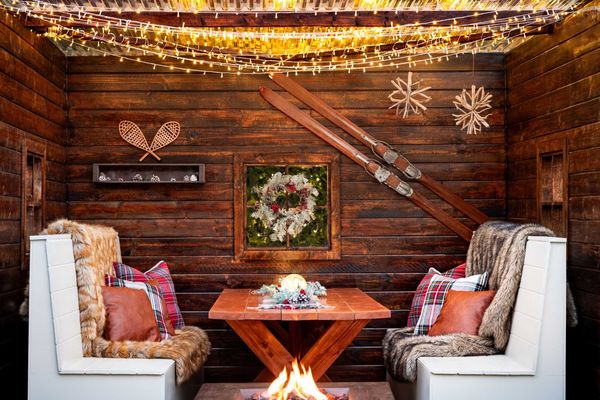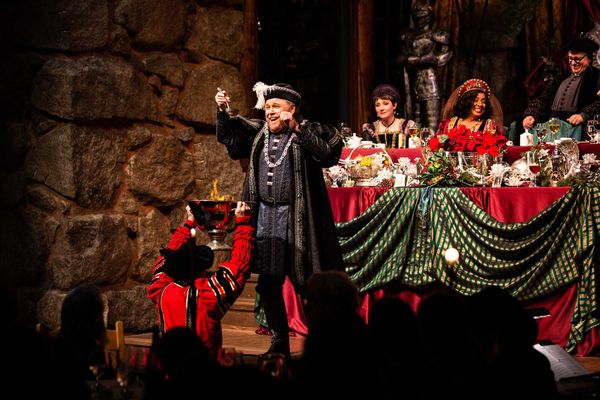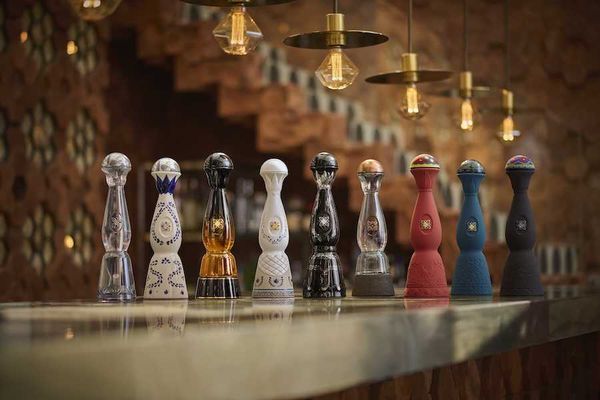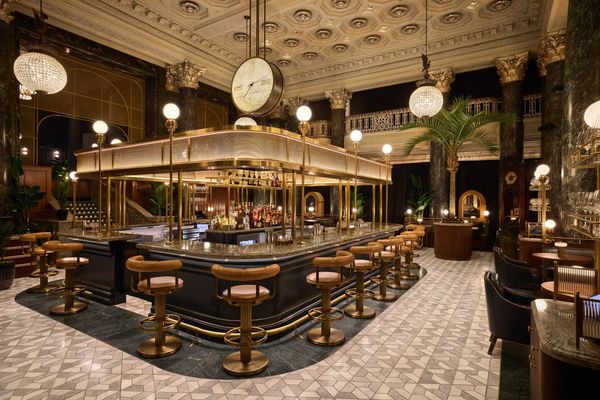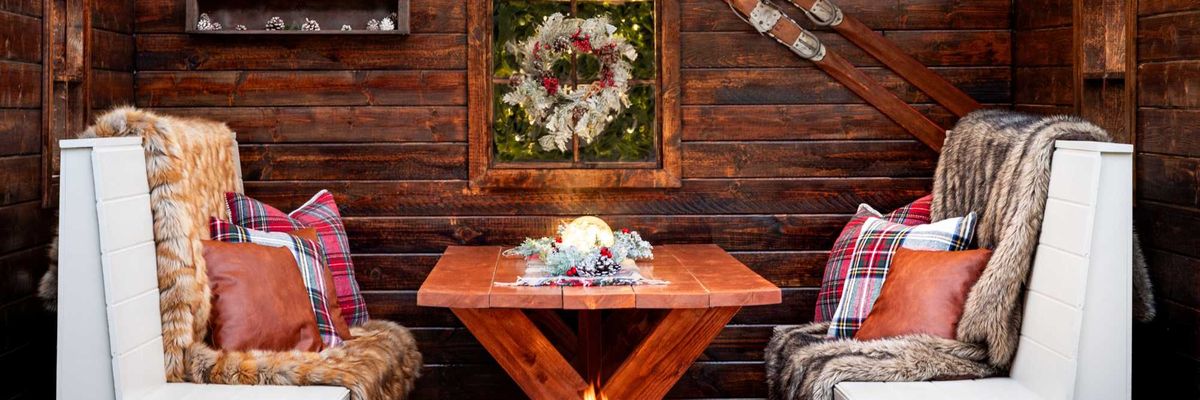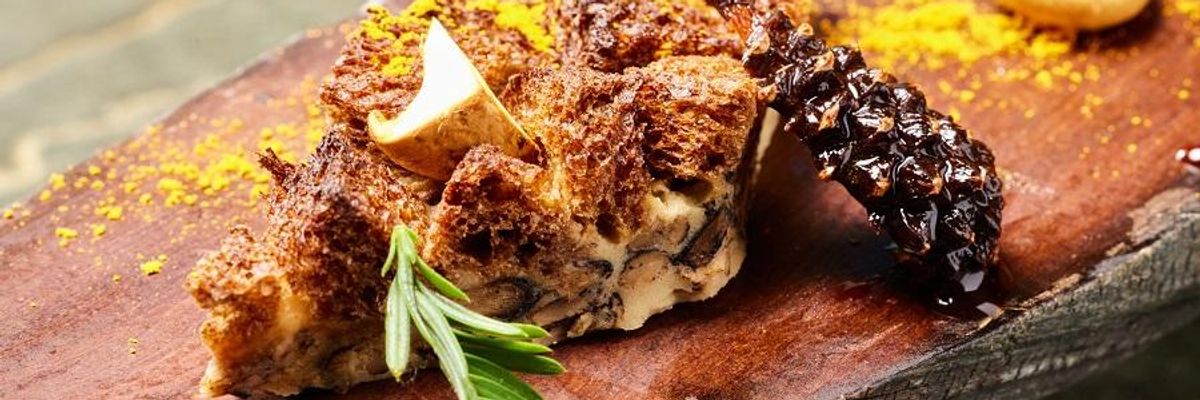Donabe (doh-NAH-bay) is a kind of traditional Japanese clay cookware that is used over an open flame. The word is made from the Kanji characters do ("clay") and nabe ("pot"). The most sought-after donabe are made in Iga, a province 210 miles southwest of Tokyo, where, for nearly 1,300 years, potters have been transforming the local clay into vessels, and firing them in kilns fed by wood from the region's red pine forests. What makes donabe from Iga so desirable is their porosity, a result of the fact that Iga's clay—dug from the remains of an ancient lake bed—is full of fossilized microorganisms that burn up in the heat of the kiln, leaving tiny air pockets which enhance the pottery's ability to retain heat.
Kyle Connaughton developed a keen appreciation for the thermal properties of donabe long before he and his wife, Katina, opened the critically acclaimed restaurant and inn, SingleThread, in Healdsburg. In the early 2000s, Connaughton was living with his family in a tiny coastal village on Hokkaido, Japan's northernmost island, having moved there to work for Michel Bras, who had recently opened a restaurant in a hotel situated between Lake Toya and Uchiura Bay. Katina, meanwhile, found work at a number of cooperative farms, where she discovered the passion for agriculture that would eventually lead to her current career, running the farm that supplies a multitude of vegetables, fruits, and other products to SingleThread's kitchen.
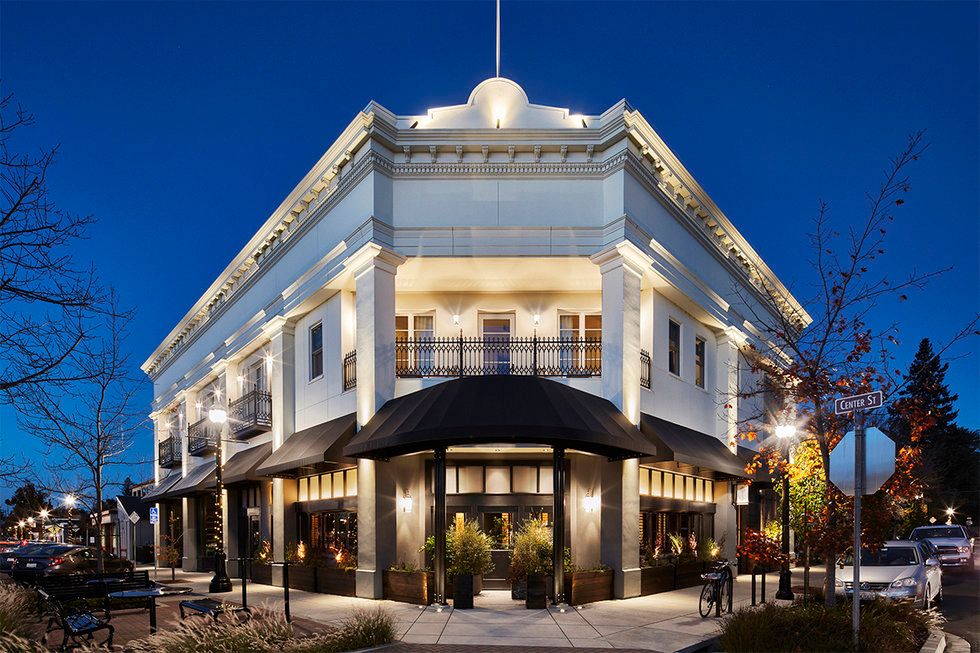
In 2011, Connaughton traveled to Iga to learn more about donabe. His guide was Naoko Takei Moore, a Tokyo native who had once been his pupil at the California School of Culinary Arts in Pasadena. Takei Moore, who currently lives in Los Angeles, imports Iga donabe to the States, selling them through her company, Toiro, which she founded in 2008.
"Naoko is really an expert on donabe cooking," said Connaughton, "although she's more oriented in home cooking than on the professional side. She's been my guide to the world of different donabe and how to use them. I knew dishes from where we lived on Hokkaido, but on a professional level I'd never thought much about it. It's funny, because I started as her culinary school teacher, and she became my teacher."
Takei Moore introduced Connaughton to the Nagatani family, whose artisanal pottery, Natagani-en, was founded in Iga in 1832. At Takei Moore's suggestion, the two collaborated on a book that explores the history, craft, and culture of donabe, as well as a multitude of traditional and modern recipes that can be stewed, braised, poached, or smoked in the versatile clay pots. Beautifully illustrated by the photographer Eric Wolfinger, it's an edifying, hunger-inducing read.
Since opening SingleThread in December 2016, Connaughton had been pondering the idea of an in-room dining experience. Guests who stay at the inn a single night always eat at the restaurant, which in late 2018 was awarded three Michelin stars. For guests who stayed longer, Connaughton wanted to offer an alternative to the restaurant's 11-course tasting menu, which doesn't change from one evening to the next. "I like the idea that the room has its own unique experience, like a secret menu," he continued, "and that there's no other way to have that experience than to come and stay."
The idea of using donabe appealed to Connaughton on a number of levels. From a service perspective, donabe had certain advantages, namely their easy portability and their ability to keep food hot. There were other considerations as well, among them the desire to share something from his background in traditional Japanese cooking, in contrast to the food served at the restaurant, which has more of a contemporary, California feel. There was also the social aspect of donabe, which resonates deeply with Connaughton's philosophy of hospitality.
"One thing I think that is often lost on chefs, especially on western chefs," he said, "is that the focus is so much on the food and the dish, and that there's less consideration of the fact that the guests are there to experience themselves." In the case of donabe, he continued, "it's interactive. You're sharing it together, it brings you closer together, you're serving one another. It's a moment that's extended. There's something comforting about it, and in the environment of the room, it's as if you're in your home."
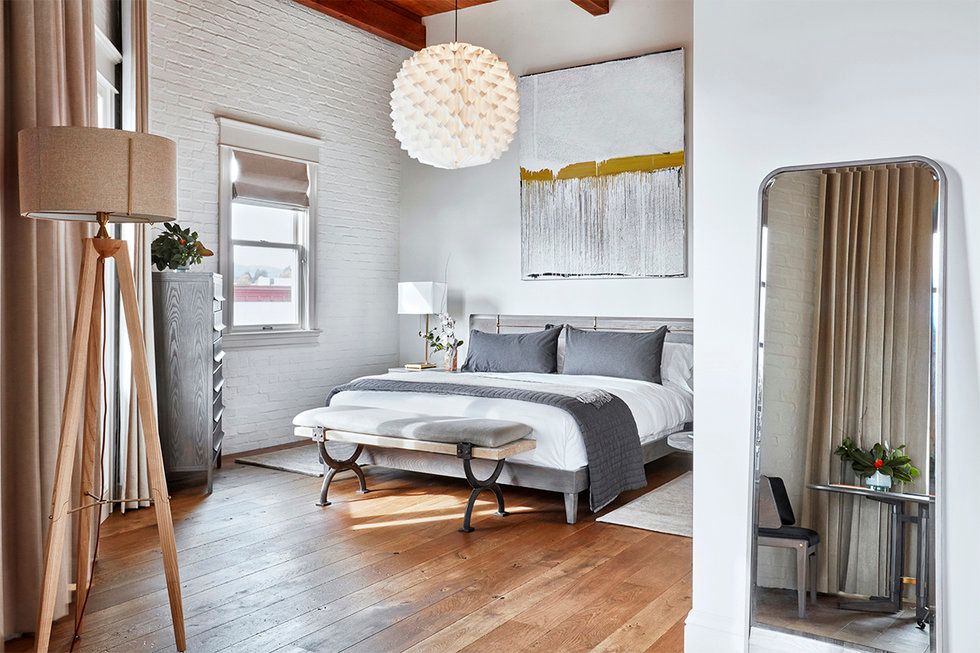
On a brilliant spring afternoon, my wife and I took little time making ourselves at home in SingleThread's master suite, a vast, flowing space with exposed brick walls, soaring redwood-beam ceilings, and a private balcony overlooking Center Street in downtown Healdsburg. The interior design, with its beautiful furnishings and surfaces in a palette of inviting tones, is the product of a close collaboration between the Connaughtons and their friends at AvroKO, the firm responsible for the distinctive look of Eight Tables in San Francisco and numerous other restaurants worldwide.
Padding around the suite in a pair of complimentary Sasawashi slippers—which have since become an indispensable part of my at-home wardrobe—I perused the in-house literature: the always-enticing guide to the hotels and restaurants in the Relais & Châteaux collection, of which SingleThread is a member; the professional chefs' magazine Art Culinaire; a collection of photography of Japanese cuisine; and Connaughton's and Takei Moore's book on donabe.
The minibar merited a look as well, especially since all of its temptations are included in the stay. Among its most intriguing contents were a SingleThread Domesticated Wild Ale whose Brettanomyces-inflected deliciousness was conceived in collaboration with The Russian River Brewing Company, and SingleThread's own 2017 Chardonnay, made with fruit grown in San Lorenzo in the Russian River Valley and vinified in a concrete vessel at the inn's on-site winery. The latter we carried home. An utterly different species from the stereotypical, heavily oaked California chardonnay, it was as irresistibly drinkable as it is exclusive—available only in SingleThread's guest rooms, and by the glass or the bottle on the restaurant's wine list.
It was going on but not quite dinnertime, so I ordered some bubbles and bivalves. A perfectly timed interval later, there was a soft knock on the door, followed by a waiter bearing half a dozen kumamotos on ice in a ceramic bowl whose crackle-glazed surface epitomized the Japanese aesthetic concept of wabi-sabi, and close on his heels, SingleThread's wine director, Evan Hufford, with a 2014 "Le Montants" Verzy Grand Cru from Champagne Adrien Renoir.
The Champagne was a beauty, bright and fruity, with a subtle saline finish. The oysters, for their part, were as plump as they were petite, and we sucked them down with alternating dabs of kanzuri—a spicy-savory chile paste particular to Niigata, Japan—and a mignonette seasoned with sansho, a zingy spice made from the unripe seedpods of the Japanese prickly ash.
As dusk turned to dark, dinner got underway at the suite's dining table, with a first course called Early Spring in Sonoma, which consisted of six morsels, each served on a unique ceramic dish. Connaughton later explained that this kind of thing is typical in the prelude to a donabe. "It's such a hearty thing," he said, "that it's generally preceded by some lighter bites. When we're dining with a family who does donabe, they'll do a course of raw and picked things, and then get into the donabe."
And so we got into the groove. There was a wedge of simmered young bamboo shoot, its texture somewhat like that of a boiled parsnip, only somewhat more fibrous, with a mildly sweet flavor reminiscent of baby corn. And a small cut of sawara (Spanish mackerel), the flavor of whose pearlescent pink flesh might be mistaken for steak tartare except for the hint of ocean. Nestled in the concavity of another tiny vessel, a pink bay scallop, its creamy sweetness counterposed by the wild tang of a bit of pickled ramp. A small cut of lotus root, braised in something very savory and garnished with sesame seeds, brought a nutty, umami sweetness to the game. Finishing it off, a small slice of densely chewy and delicately flavored mejina (rudderfish) curled around some braised konbu and a sliver of the green stem of negi, a type of Japanese onion; and aji (Japanese horse mackerel) garnished with a dot of pickled Indian lime and a pale pinkish-purple chive blossom.
The second act was a composition called North Coast Tide Pool. Served in a bowl made of exotic-looking, vividly grained wood, it was a minor parade of delicacies: luxuriously fatty slivers of akabana kanpachi (akabana being one of the more mature forms of kanpachi, also known as amberjack), crispy wild seaweeds, and the salty snap of sea beans. Accompanying this course was another hard-to-come-by wine: Domaine Vacheron's L' Enclos des Remparts, Franc de Pied. One hundred percent sauvignon blanc grown in the flinty soils of Sancerre, its softly tart lemon- and tangerine-like flavors went brilliantly with the unctuous fish.
There was a logic to all this fishiness, since from among the donabe options—which included American Waygu shabu shabu, pork meatball tan tan, and Kyoto vegetable and housemade tofu—we'd chosen the Hokkaido seafood hotpot. To prepare it, the cooks sweat some ginger and Japanese scallions with sake, mirin ,and a little sesame oil; then add dashi (the versatile Japanese soup stock), then vegetables and tofu; and finally the seafood, which cooks in the brief amount of time it takes the covered donabe to travel from the kitchen to the guest room.
Set down on the table atop a portable gas burner, the donabe, a lustrous black number from the Nagatani-en pottery, was ready to go. The burner—which was only serving as a pedestal at this point, as the pot was piping hot—would come into play later on to fire up the donabe for the shime (SHE-meh), a finishing course in which rice would be added to the dashi and cooked into a porridge-like concoction.
(Nick Czap)
The donabe was accompanied by several small, unique ceramic pieces, each with a different condiment.

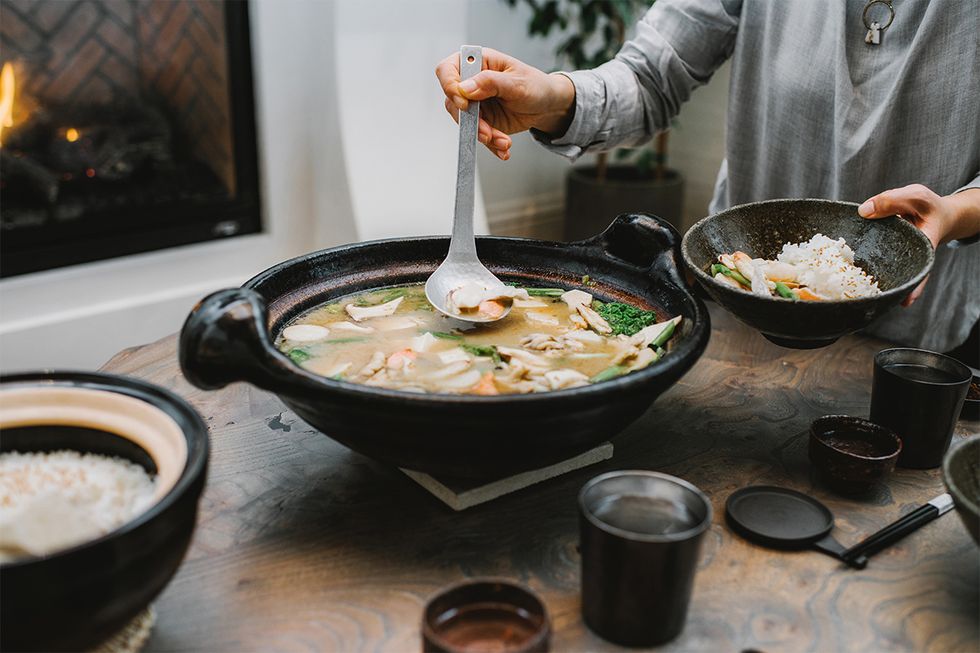
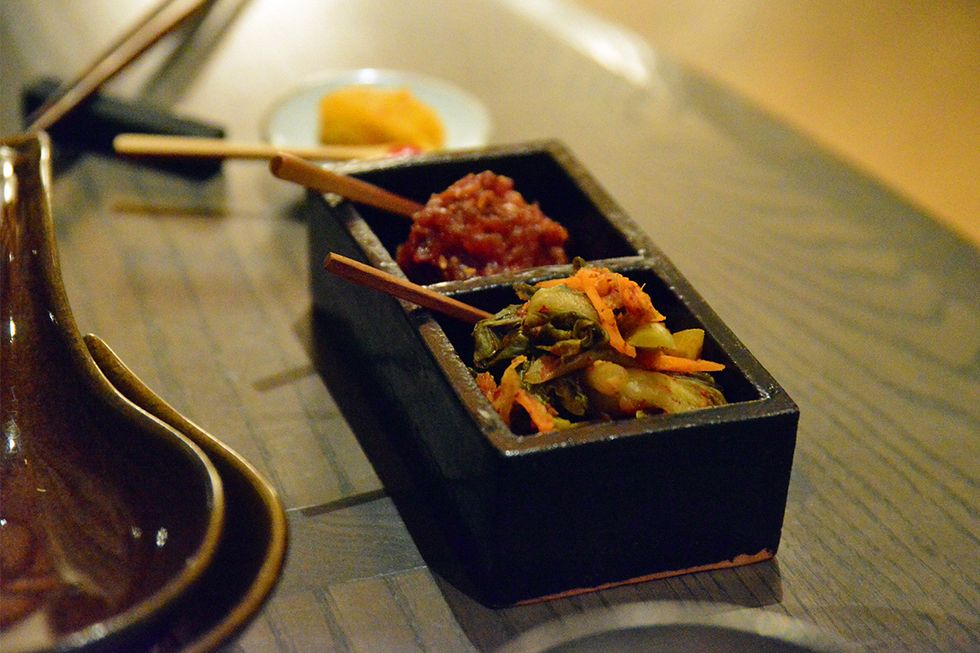
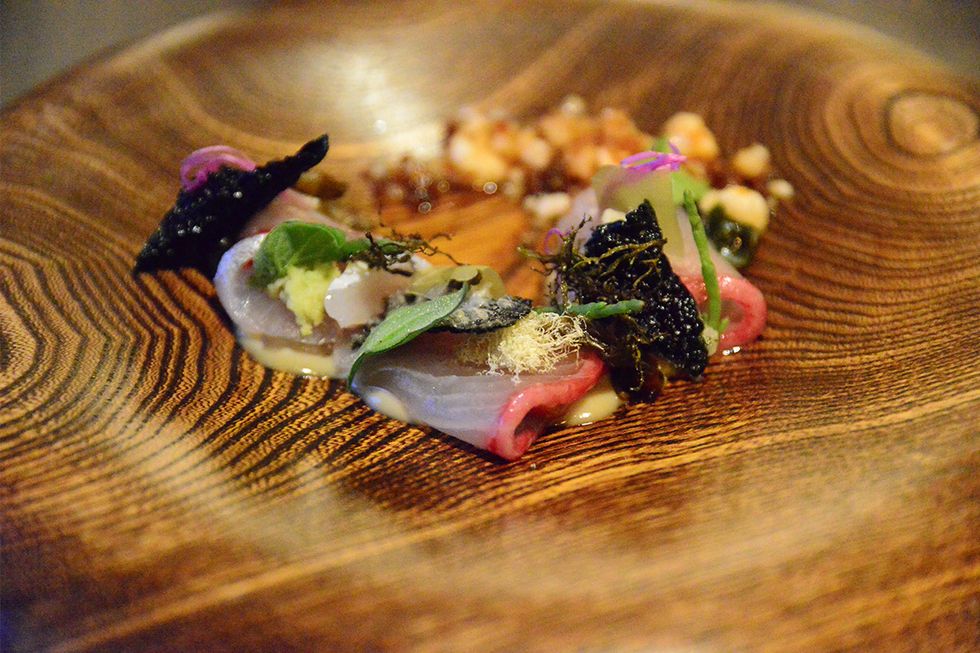
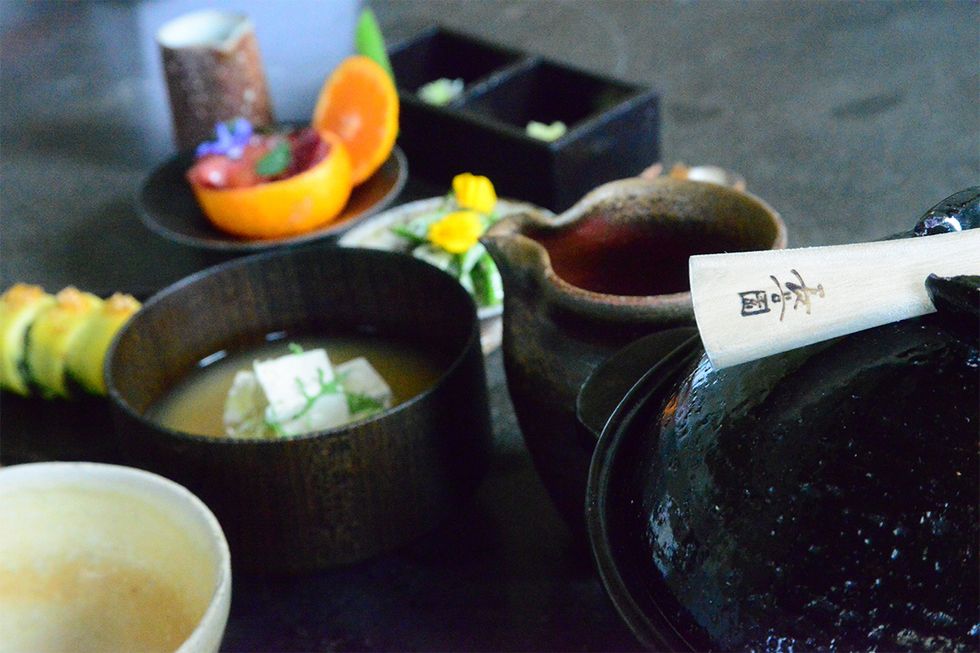
// SingleThread, 131 North St. (Healdsburg), singlethreadfarms.com



